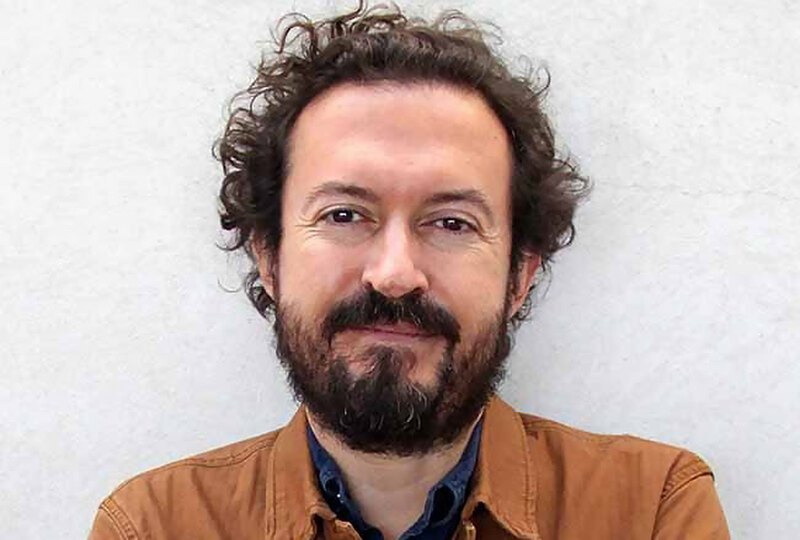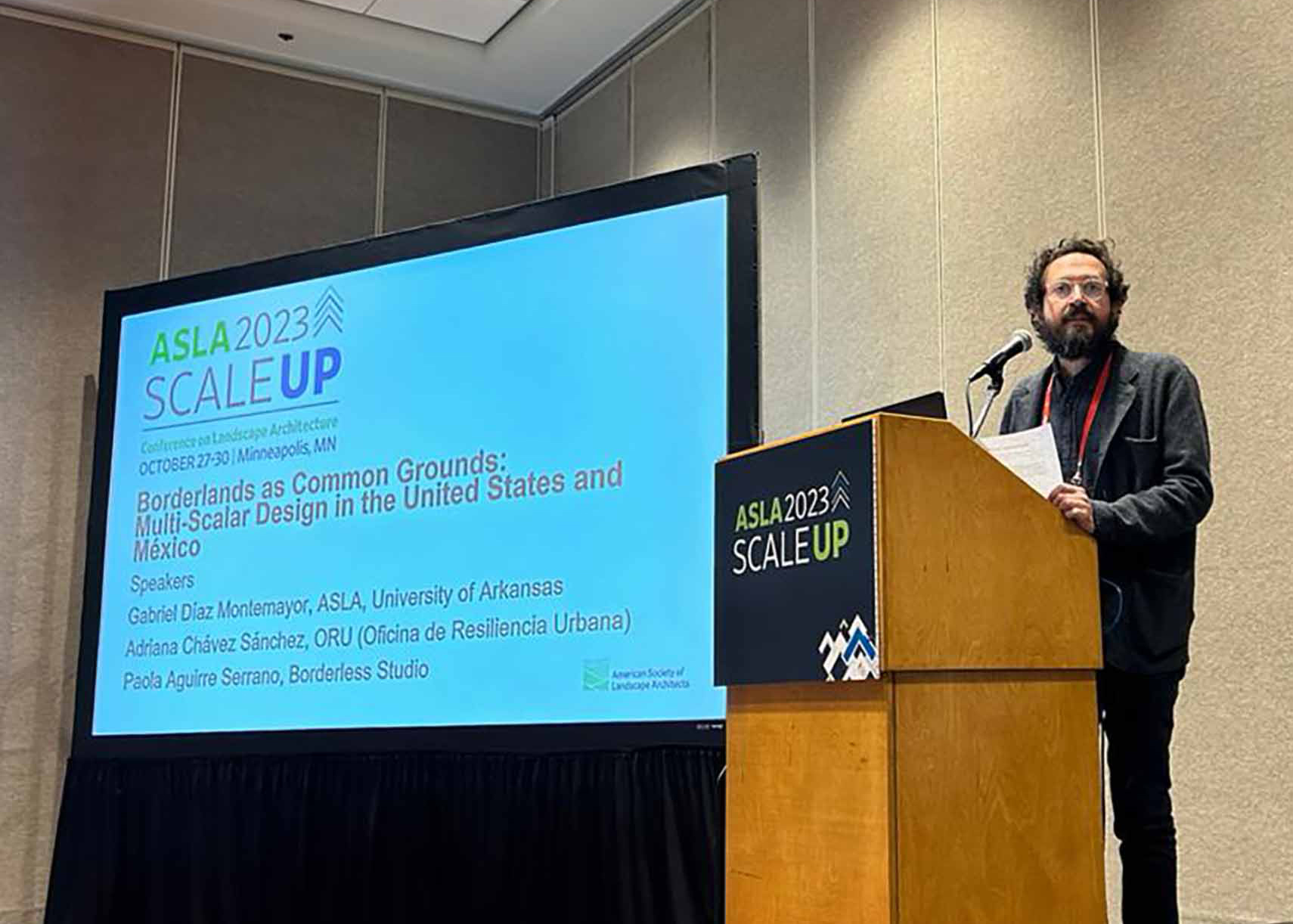Perspectives: Gabriel Díaz Montemayor

Gabriel Díaz Montemayor is an Associate Professor of Landscape Architecture at the Fay Jones School of Architecture + Design at the University of Arkansas at Fayetteville.
SEPTEMBER 2024
Tell us about yourself.
I’m from Chihuahua City, which is the capital of the state of Chihuahua in northern Mexico, bordering Texas and New Mexico. I’ve been in the United States for 17 years. I was originally trained as an architect in my hometown. Interestingly, the first public lecture I attended as an architecture student was from a landscape architect. I remember it was impactful and made me realize that landscape architecture could be a professional path.
Being from northern Mexico, I characterize myself as a border crosser. I was born into a privileged family that had access to a form of visa known as a ‘border crossing card,’ which allowed easy travel to the United States side of the border region. My proximity to the US influenced my cultural identity as I frequently visited El Paso and Ciudad Juarez, which exposed me to different cultures manifested in public landscapes and urban forms.
My family is from Mexico City, so I spent my summers there. It is a big metropolis compared to the much smaller city of Chihuahua. This exposure to different public landscapes and transitioning between places—not really belonging to one place or another—left a lasting impression on me. This experience might have made it easier for me to move to the US with my wife, with whom I now have two American daughters. We moved to the US so I could study an MLA at Auburn University in Alabama. Now I’m an American citizen, and my varied experiences have shaped who I am today.
What are the major themes of your current teaching and practice?
I have always been interested in the US-Mexico border region and have addressed this in multiple ways. I’ve contributed to the planning of Northern Mexican cities, integrating the principles and methods of landscape architecture, which is still an emerging profession in Mexico. This work was mostly done through student projects and sponsored studios.
Recently, I’ve been working with the International Federation of Landscape Architects (IFLA) Americas, focusing on migration and landscape. We’re looking at how migration—connected to climate change and socio-political, ecological, and geopolitical issues—impacts landscapes. This includes temporary shelters for migrants and communities where diasporas start to gather, both in the US-Mexico border region and places like here in Arkansas. I’m interested in the movement of people and how landscape architecture can address the cultural transformations that come from this phenomenon.
Much of what I’ve described involves working with students or through collaborations like the Migration and Landscapes Group from IFLA. Another important aspect of my work is mentoring and advising young Latinx or Hispanic scholars and faculty in the US. After 17 years as a faculty member, I’m now in a position where I have the experience to support younger scholars. This is fulfilling to me. When I started as a faculty member, I lacked a network of Hispanic and Latinx faculty for support. Now I’m involved in networks like the Deans’ Equity and Inclusion Initiative, which aims to support minority faculty across design disciplines.

How do you think landscape architects, faculty, and others in the field can make the world a better place?
We live in a culture of avoiding difficult truths. Remember that movie Don’t Look Up where scientists discover an asteroid is headed for the planet, and it ends up destroying the planet because society can’t agree on what to do about it or come together. I think the “don’t look up” culture is analogous to a ‘don’t look down’ culture. We share the same spaceship, the same platform, right? I think landscape architects have obvious agency in mitigating the socio-ecological erosion of our common ground, our common places, our common landscapes. When we’re working on border regions and migration, we’re always thinking about this approach and how to emphasize what we share and how we can work together to make our world a better place through engagement and conversation, as opposed to conflict.
What are the biggest challenges facing the profession right now? And where would you like to see changes in the next 10 years?
One challenge is the lack of awareness about landscape architecture and what we do. There’s often a misunderstanding of our profession. Another connected challenge is expanding access to the profession, which continues to be a portrait of exclusivity. We must look at all the components of the system, from elementary education through getting into college and beginning professional practice.
As demographic shifts occur, particularly in the US, landscape architecture needs to adapt and develop curricula that are more flexible and responsive to current realities. Changes in landscape architecture and beyond the discipline in the last few decades have happened faster than our ability to transform our programs of study, and we have some catching up to do and more work to make our teaching and learning more responsive to accelerated and dynamic socio-ecological shifts.
Where can readers learn more about your work?
- Field Notes on Design Activism: 7 in Places Journal
- Urban and environmental regeneration in Mexican cities: a design framework in the Journal of Urbanism
- Recovering Subsidized Housing Developments in Northern México in Sustainability
- Floods that Know No Bounds in Landscape Architecture Magazine
- ASLA-award-winning student work: “Y Shape Jetty System” and “Public Space Design Guidelines for Saltillo, Mexico”
LAF's Perspectives interview series showcases landscape architects from diverse backgrounds and identities discussing how they came to the profession and where they see it heading. Any opinions expressed in this interview belong solely to the author. Their inclusion in this article does not reflect endorsement by LAF. This interview has been edited for length and clarity.
To stay up to date on future Perspectives articles, as well as LAF programs, events, and funding opportunities, subscribe to LAF emails.











